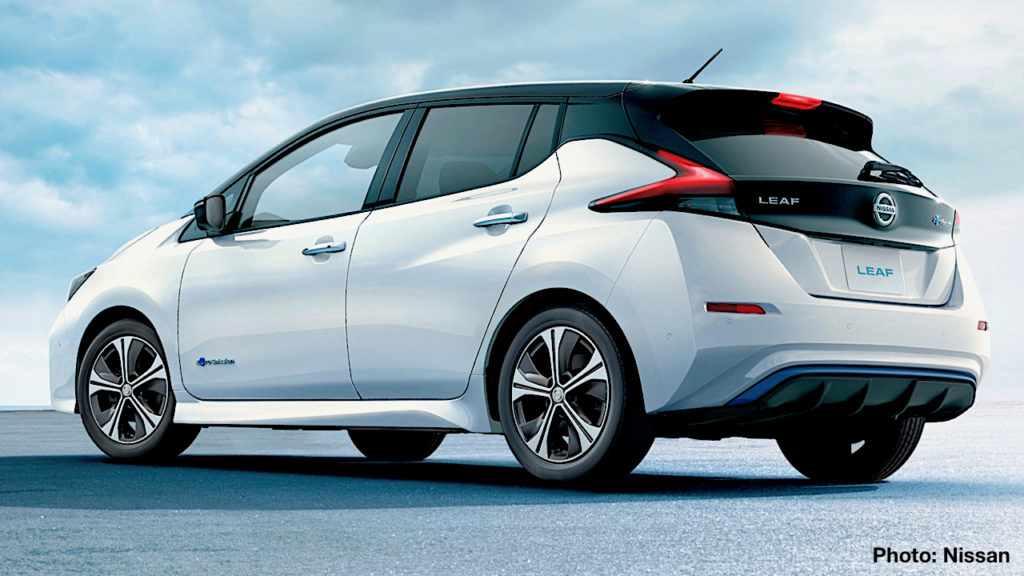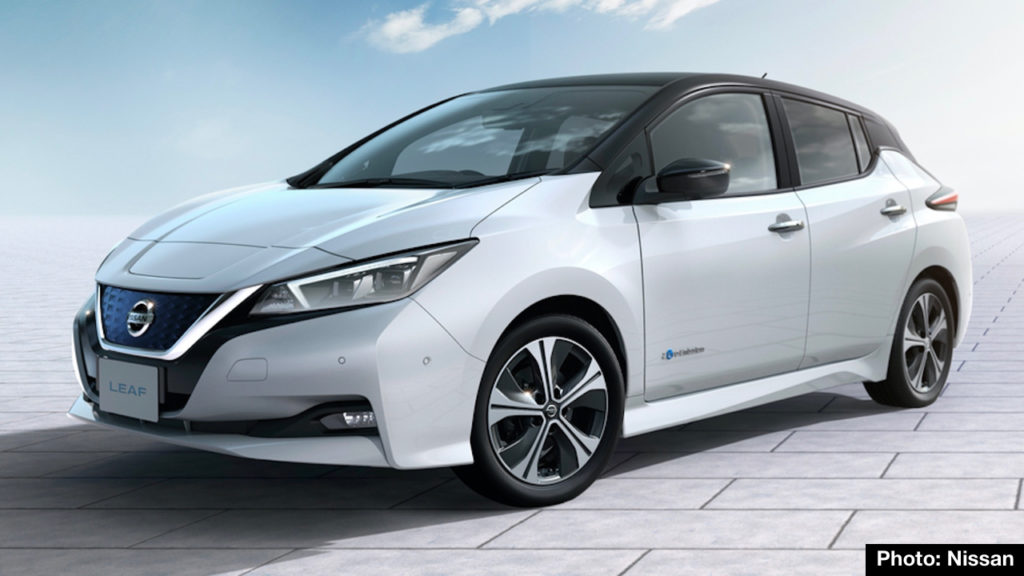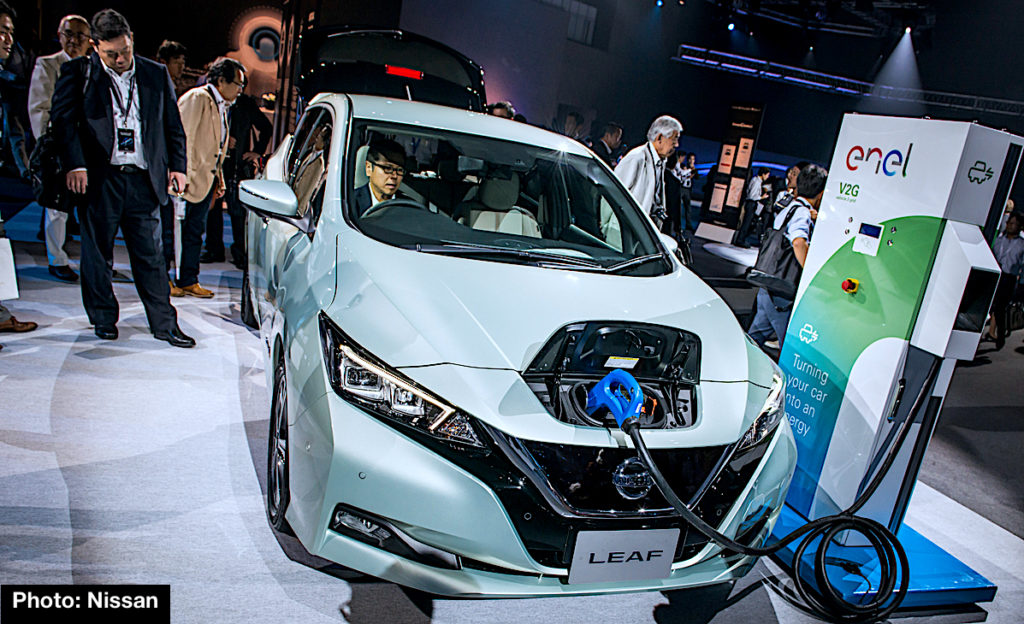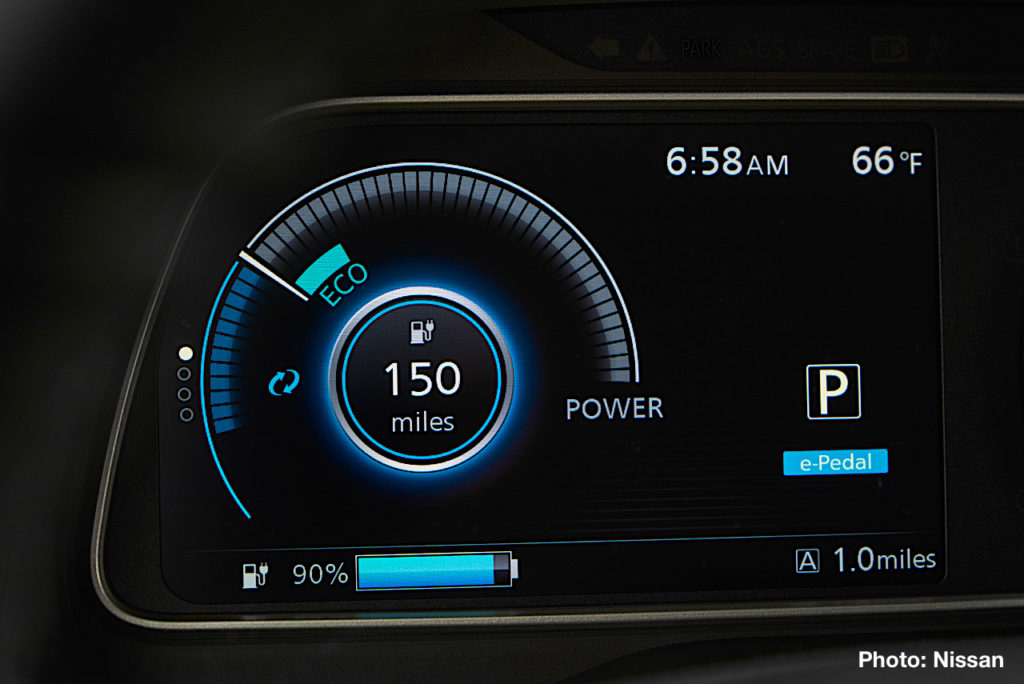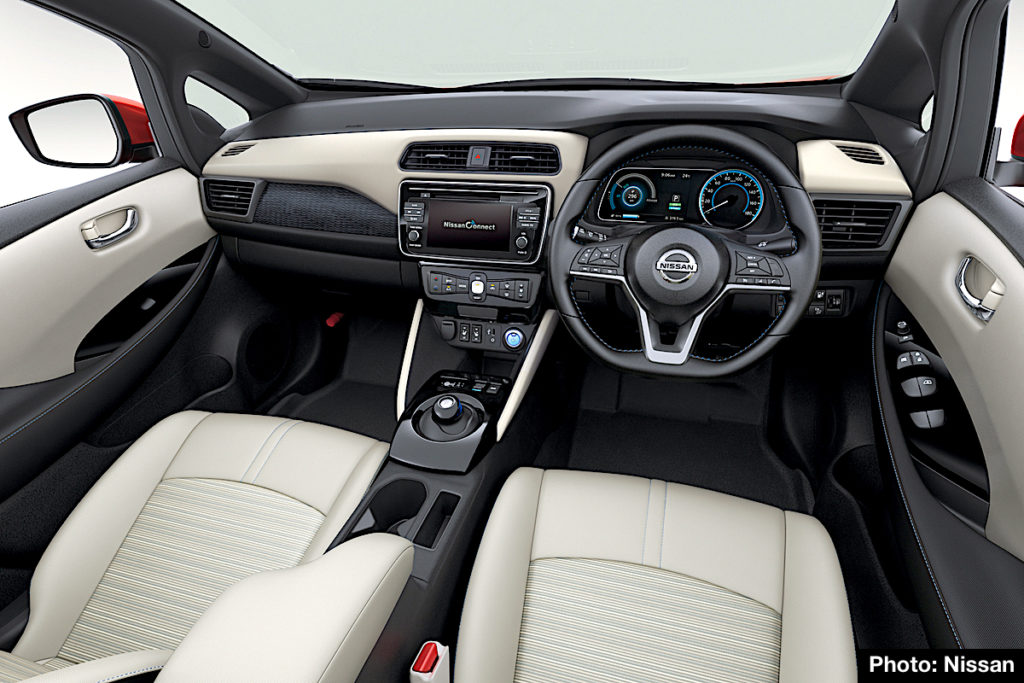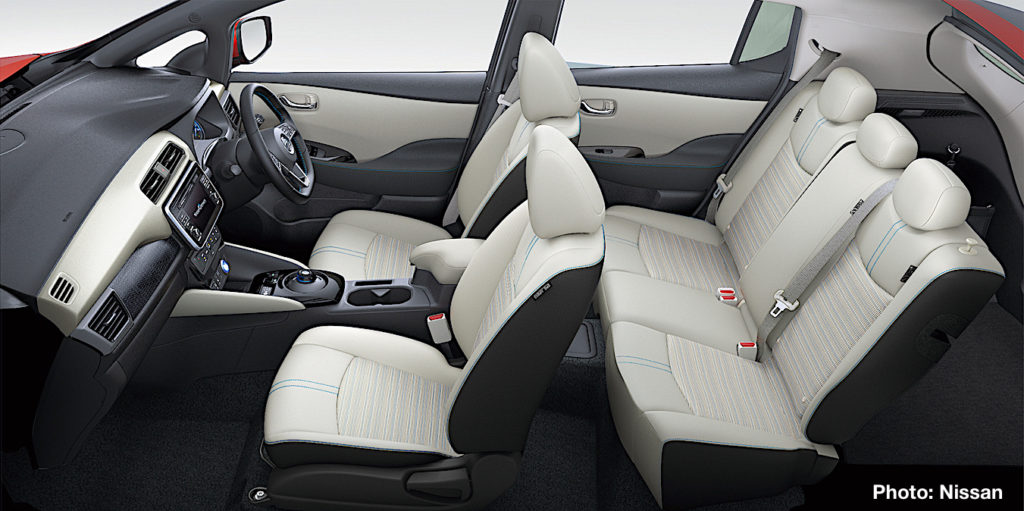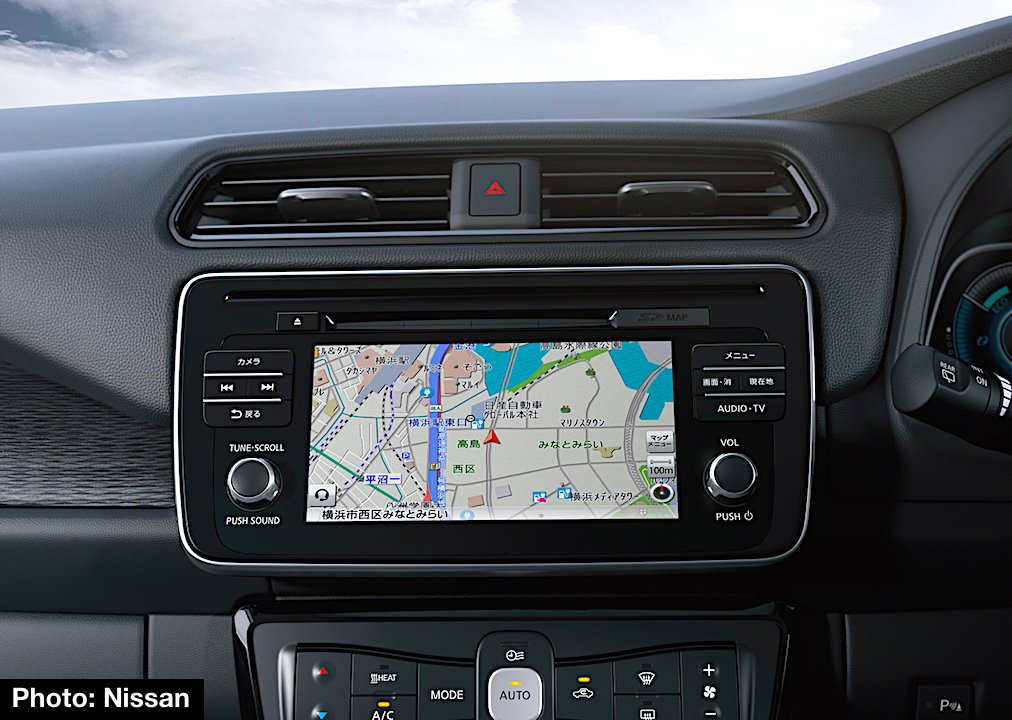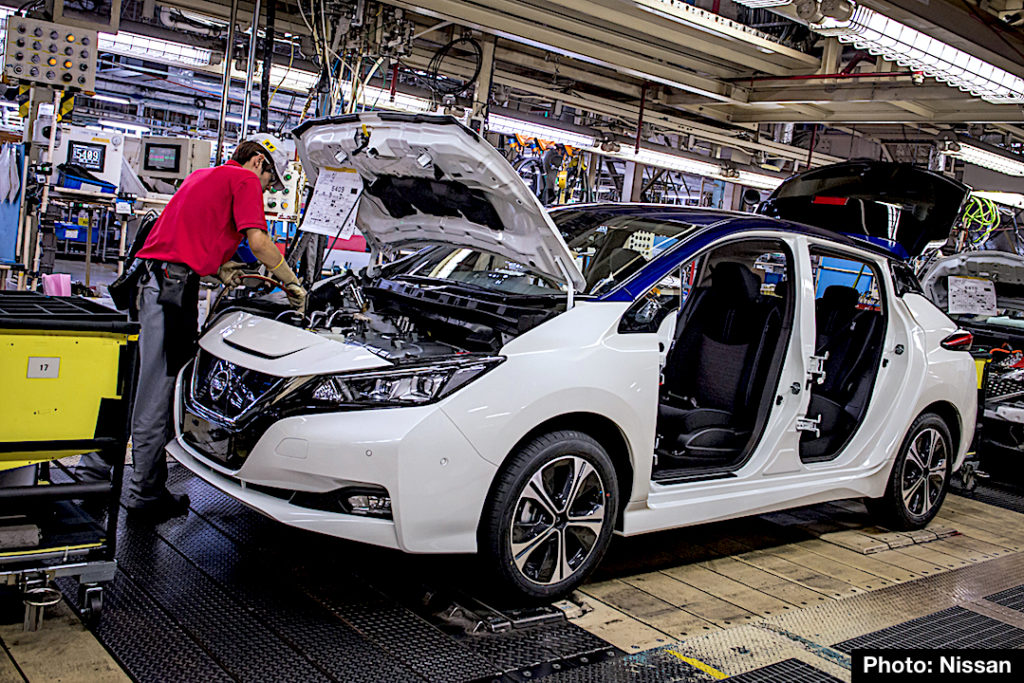By Steve & Tamami Laser
We’ve been counting the days until the reveal of the second-generation Leaf, and now it’s here. Nissan staged the world premiere of the new Electric Vehicle in Tokyo this week with a separate presentation of the North American model in Las Vegas. The Leaf gains all-new styling, improved driving range, and the availability of high-tech safety and driver-assist features.
Nissan says the new Nissan Leaf will go on sale in Japan on Oct. 2, with deliveries for the U.S., Canada and Europe starting in January 2018. The new Leaf’s design is more fluid and dynamic, capturing the automaker’s forward-thinking attitude and efforts to improve the world’s best-selling Electric Vehicle. To date, Nissan has sold more than 283,000 units of the Leaf globally. The new model is inspired by Nissan’s IDS Concept car that we saw at the last Tokyo Motor Show in 2015.
The exterior design concept expresses clean and simple lines and a robust and sleek silhouette, creating the feeling of a high-tech device. The signature V-Motion grille, “boomerang” lights and floating roof emphasize Nissan’s brand design, giving the Leaf a more modern look. A clear-blue 3D mesh pattern with a “freezing” motif on a flush surface inside the grille is said to express Leaf’s uniqueness as an EV.”
Leaf’s new ProPILOT Assist (Nissan’s advanced single-lane driver assistance technology), helps ease driver workload by reducing the amount of driver acceleration, steering and braking input under certain driving conditions. While Leaf’s e-Pedal technology lets drivers start, accelerate, decelerate and stop by increasing or decreasing the pressure applied to the accelerator. When the accelerator is fully released, regenerative and friction brakes are applied automatically, bringing the Leaf to a stop.
Leaf’s new e-powertrain offers improved energy efficiency and increased torque and power with an output of 110 kW (147 horsepower), 38 percent more than the previous-generation Leaf. Torque has been increased 26 percent to 320 Nm (236 lb.-ft.), resulting in improved acceleration.
The new battery design adds energy-storage capacity without increasing its size. Cell structure of the laminated lithium-ion battery improves, representing a 67 percent increase in energy density versus the 2010 model. Another engineering improvement for the battery pack is enhanced electrode materials with revised chemistry, resulting in higher power density while contributing to greater battery durability on charge and discharge.
Along with the additional power output, the new Leaf’s driving range has increased. The car’s new lithium-ion battery pack delivers an estimated range of 400 km by Japan standards (150 miles for U.S. models), which should help to meet the daily driving needs of many customers. For those seeking enhanced performance, Nissan says it plans to offer another version with more power and longer range during 2018 as a 2019 model (timing may vary by market).
The new Leaf’s completely redesigned cabin is focused on the driver, featuring a dash panel in the form of a “gliding wing.” It combines good use of space with functionality and high-tech features. (Japan-market model shown with right-hand drive.)
Leaf’s new interior design creates a “relaxed ambience and premium quality feel,” thanks to carefully selected materials. Vibrant blue stitching in the seats, dashboard and steering wheel are used as a symbol of Nissan’s electric vehicles.
The 7-inch, full-color (TFT) display has been redesigned to highlight key features, such as the Safety Shield technology power gauge and audio and navigation system information. Apple CarPlay™ has also been added.
Nissan’s Oppama plant in Yokosuka, Japan, is building the new Leaf. By the end of 2017, the automaker plans to start Leaf production at Nissan’s plant in Smyrna, Tennessee, and Nissan Motor Manufacturing in Sunderland, U.K. First-generation Leaf production started at Oppama in 2010, and at Smyrna and Sunderland in 2013. Leaf batteries will continue to be produced in Smyrna, Sunderland and in Zama, Japan.
News source and photos of Japanese-market models courtesy of Nissan Motor Co. Ltd. Additional news source from Nissan North America, Inc. Product information, features, specifications and launch timing is subject to change without notice.
Story (commentary) © 2017 CarNichiWa.com
